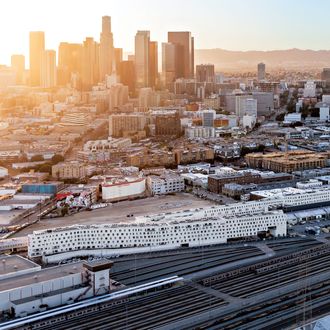
In 1971, the critic Reyner Banham observed that most buildings in Los Angeles were the first on their lots: “instant architecture in an instant townscape,” he called it. Today, the city is turning over. If L.A. became the quintessential 20th-century metropolis by embracing cars and treating nature as a distraction, it is now trying the opposite. Public transit is reintroducing the car-free life, and architects are reinventing the local vernacular. Covert pockets of density now integrate the natural landscape: Mayor Eric Garcetti has pushed for the rebirth of the Los Angeles River. The Broad Museum and Grand Park now enrich the area near Frank Gehry’s Walt Disney Hall. Nearby, the old St. Vibiana Cathedral has been reborn as an evocative event space and is home to the restaurant Redbird. “L.A. will completely recycle itself in the next 20 years,” says the Silver Lake–based architect Barbara Bestor. That may sound wildly overstated, but only because we’ve forgotten how quickly this resourceful city materialized in the first place.
LIVE
In a city of single-family houses that still treats apartment living as a painful compromise, these projects take a distinctively L.A. approach to packing people closer together.
One Santa Fe, Arts District (top photo)
Michael Maltzan
Maltzan takes the typical low-slung courtyard building and unfurls it into a long white ribbon that arcs into the air. Part ramparts, part live-in viaduct, part toppled skyscraper, this almost comically long and narrow complex divides the Arts District, with its warehouses turned galleries, from the train yards and the concrete-encased river.
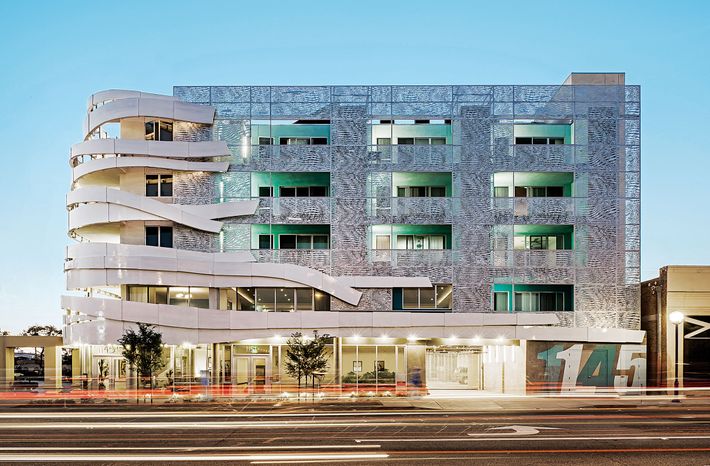
The Courtyard at La Brea, West Hollywood
Tighe Architecture with John V. Mutlow Architects
This low-income-housing complex reinvents the classic L.A. courtyard building and creates privacy and serenity in tight spaces. Giant bamboo shields the small apartments from each other, and a sinuous metal screen offers more than just metaphorical shelter from the street.
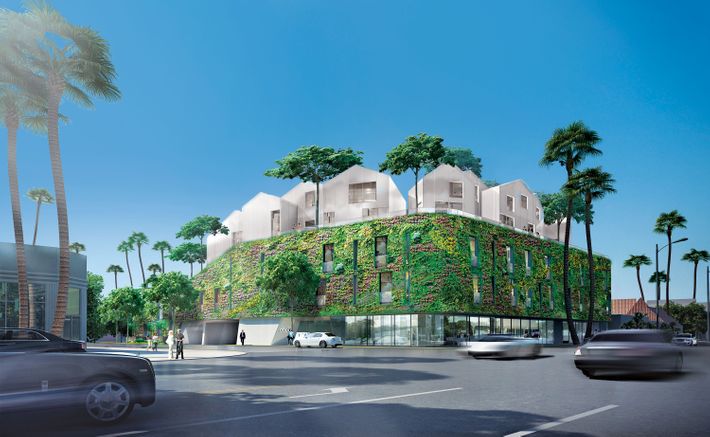
8600 Wilshire, Beverly Hills
MAD
In this still-under-construction project, the Beijing-based firm MAD envisions importing a hilltop community like, say, Laurel Canyon into the flatlands. Instead of spreading out in secluded estates, residents live around a hidden garden that conjures L.A.’s classic landscaped hillsides, elevated above glass-clad stores.
WORK
The low-lying office park takes a wild detour in the Hayden Tract of Culver City, once a dilapidated industrial area, now a high-end creative-industries enclave.
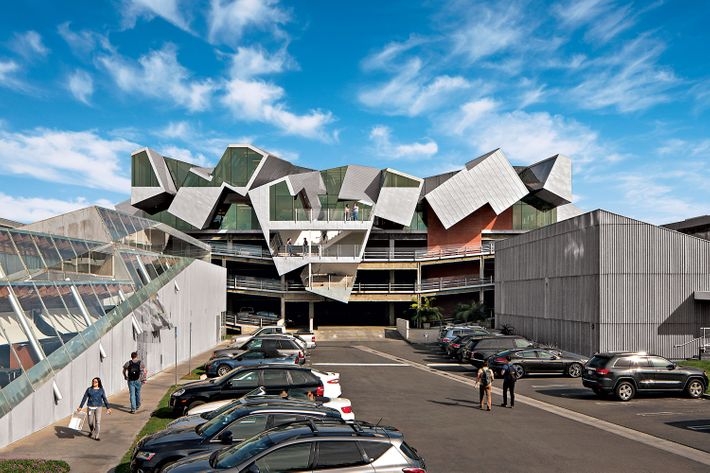
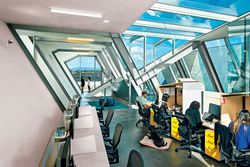
Pterodactyl, Culver City
Eric Owen Moss
Moss, who has been tinkering in the area since the 1980s, has gradually turned Hayden Avenue into a permanent exhibition of his most outlandish work, a symphony of wavy towers, bulbous protrusions, teetering forms, and interwoven planes. In his latest, a deconstructed advertising-agency headquarters, he drapes a layer of tilted cubes over a three-story parking garage, simultaneously glorifying and disguising one of car culture’s principal architectural artifacts.
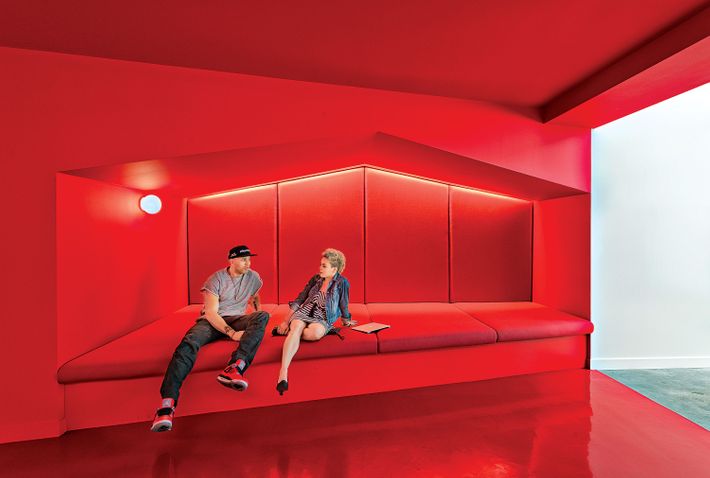
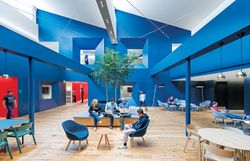
Beats by Dre, Culver City
Bestor Architecture
The headquarters of the company, which was recently bought by Apple, are an upscale, high-design version of the playground-as-office. Barbara Bestor creates what could pass for an idealized student center, outfitted not with the usual perks of pool tables and nap rooms but with bright colors, clublike scarlet nooks, zebra-walled staircases, and a café with a giant helicopter view of L.A. printed on the double-height wall. The effect is an illusion that this is not so much a humdrum workplace as a nerve center for elaborately choreographed fun.
The New Commute
A bus depot that is actually attractive
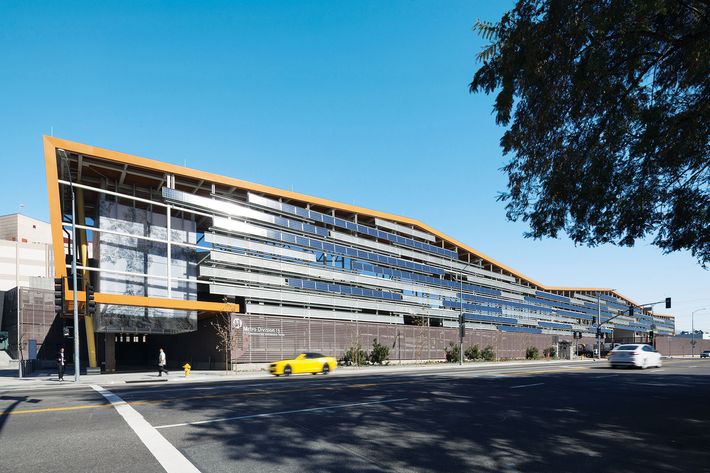
As the public-transit network spreads, L.A. is building new functional monuments, like the District 13 Bus Maintenance and Operations Facility near Union Station, by design firm RNL. Green, light, sleek, and appealing, it suggests that the city is facing a post-peak-car future with pride.
The Future of Work
The site of a former 1960s office park in Playa Vista is being transformed into a tech hub by Gensler architects. Facebook has signed a lease to occupy 35,000 square feet of the complex.
PLAY
Leisure in L.A. is not traditionally a public matter. Lately, though, the city has started to develop a new civic identity with open, shared facilities for culture and relaxation.
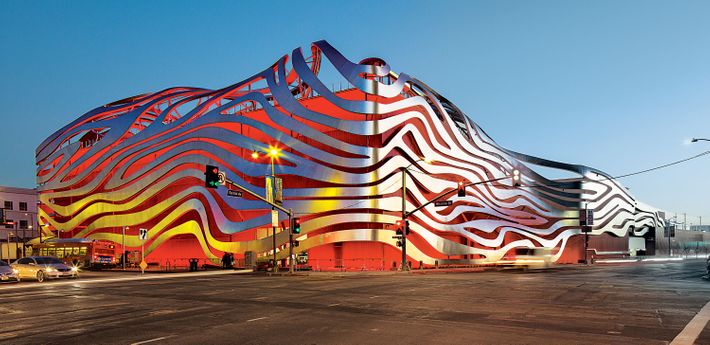
Petersen Automotive Museum, Miracle Mile
Kohn Pedersen Fox
Googie architecture — the mid-century L.A. look of speed, space, and car culture — is reborn in the cherry-red box topped with steel swirls. Diagonally across Wilshire Boulevard from the famous, space-age Johnie’s Coffee Shop, by Armet & Davis, the museum nods to the glory days of running boards and fins, without actually looking old-fashioned.
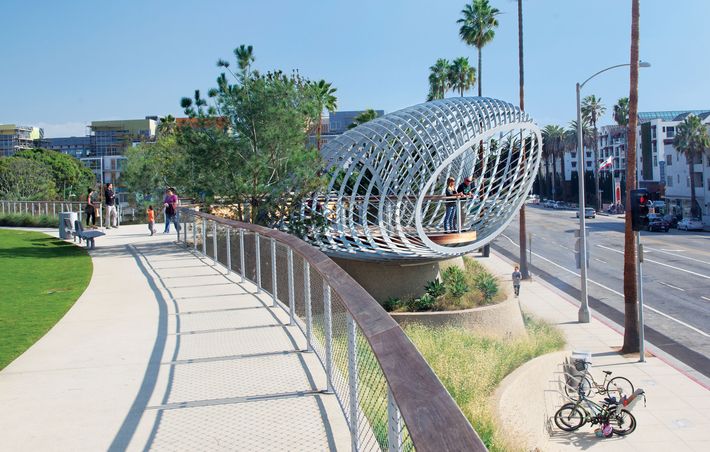
Tongva Park, Santa Monica
Field Operations
L.A. spent much of the 20th century stinting on downtown public space; now it’s trying to make amends. This sumptuously landscaped park in Santa Monica includes palm-lined allées, ramps that clamber over a drought-defying fountain, and a pair of egg-shaped stainless-steel arbors from which to watch the sun set over the Pacific.
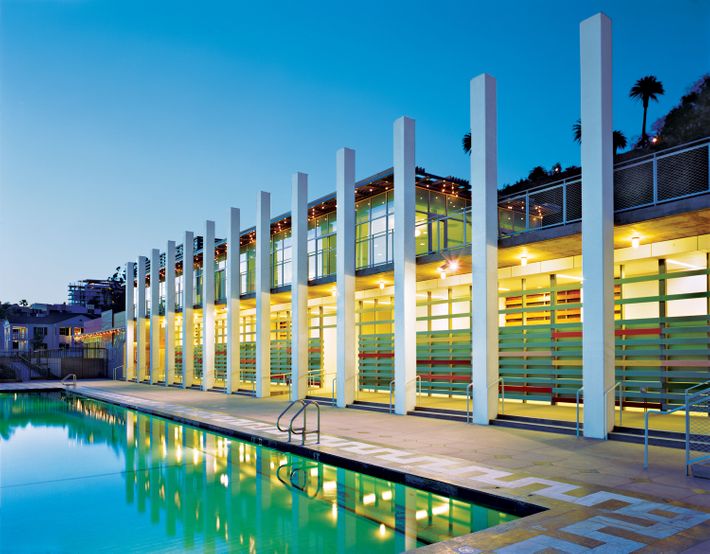
Annenberg Community Beach House, Santa Monica
Frederick Fisher
The Northridge Earthquake of 1994 damaged the beachfront estate built by William Randolph Hearst. The white Colonial guesthouse still stands, though, and the 1920s pool is now the centerpiece of a very un-Hearst-like community beach house. The design is both nostalgic and exuberantly contemporary, a monument to the tasteful democratization of play.
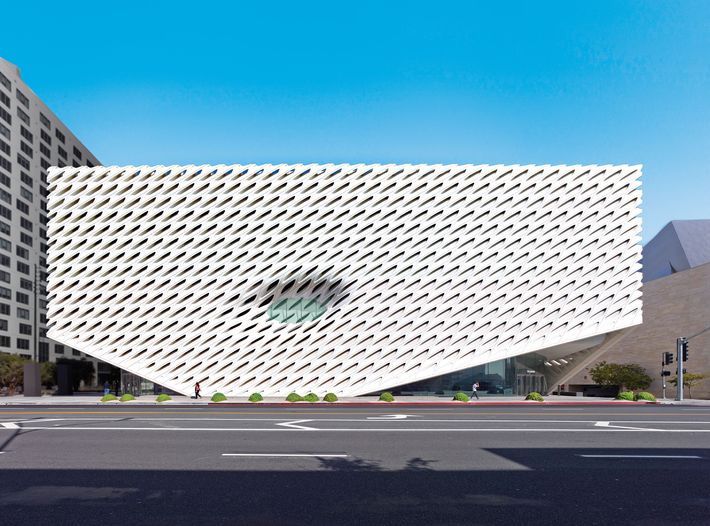
Broad Museum, Bunker Hill
Diller Scofidio + Renfro
The new Broad sits between a row of century-old olive trees and Gehry’s Disney Hall. The porous concrete veil fitted over the boxlike museum evokes a host of SoCal associations: the 1964 American Cement Building, Gehry’s early experiments with chain-link fences, and the screens that cover parking garages all over the city.
The Old Vernacular
Johnie’s Coffee Shop
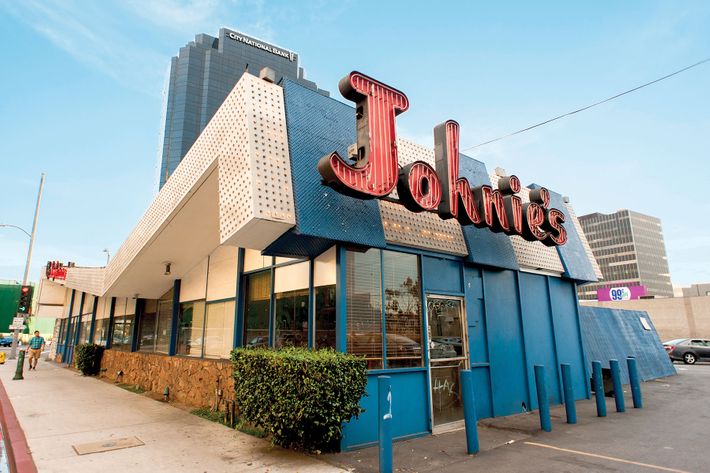
Intact but vacant, Johnie’s Coffee Shop sits at the corner of Fairfax and Wilshire like a monument to L.A.’s joyful years. Opened in 1956 as Romeo’s Times Square and now a city landmark with an uncertain future, the restaurant sports a butterfly-wing roof and neon signage that crystallize Googie architecture.
The Future of Play
Los Angeles River, imprisoned in concrete and frequently forgotten, may one day be liberated. Mayor Eric Garcetti and Frank Gehry have joined a longtime group of activists and planners working to turn the 51-mile drainage ditch back into a beautiful and useful urban waterway.
*This article appears in the April 4, 2016 issue of New York Magazine.






























